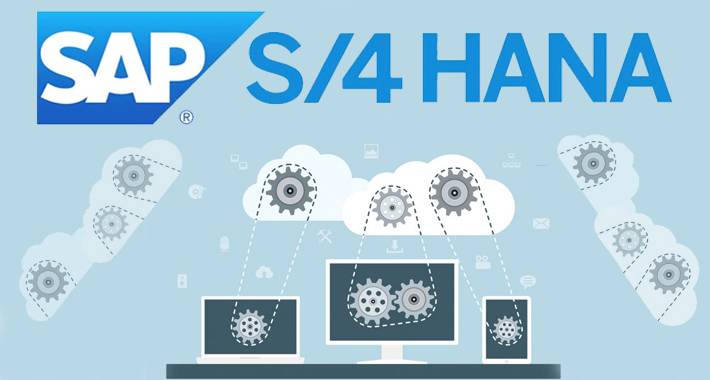In today’s hyperactive digital landscape, businesses are looking for innovative programs that streamline their operations toward better overall efficiency. SAP S/4HANA is one example of a next-generation enterprise resource planning (ERP) suite aimed at enabling organisations to take full advantage of real-time data and insights. In this article, we overview the capability of features, advantages, and uses of this SAP S/4HANA Cloud Public Edition and why it is becoming the better selection for most businesses.
Understanding SAP S/4HANA
SAP S/4HANA is an advanced real-time in-memory database solution that allows organisations to deal with a greater volume of work. It enhances informed decision-making and operational flexibility. Its architecture is designed to simplify business processes and remove data redundancy through a seamless user experience. Intuitive to operate, it also allows for potential developments of advanced analytics. SAP S/4HANA empowers an organisation with deep insight and analysis, which propels the organisation forward towards increased productivity and profitability.
Features of SAP S/4HANA Cloud public edition
Among the features of the SAP 4HANA Cloud Public Edition is its comprehensive suite of features that address the current needs of modern businesses. Financial management, supply chain management, and human resources management are all integrated into a single platform and are the key functionalities. The cloud-based nature of this edition also facilitates easy scalability to rapidly adapt to changing market demands, ups and downs in the product life cycle, and growth opportunities. This flexibility will be important in today’s fast-moving business environment.
It also features regular updates so users get the latest innovations and enhancements without lengthy downtime. Such a continuous improvement model will help businesses stay competitive by utilising the latest technology and best practices. The SAP S/4HANA Cloud Public Edition makes all these possible, thanks to its intuitive, user-friendly interface and sophisticated functionalities, which aid organisations in minimising operational complexity and optimising and growing processes. However, this edition sets businesses up for success in an increasingly digital world.
Benefits of adopting SAP S/4HANA
A big advantage of using SAP S/4HANA is the ability to increase efficiency through automation. By automating repetitive tasks, businesses can free up resources to spend on strategic initiatives and thereby become more innovative. Also, the real-time analytics capabilities on the platform provide organisations with valuable insights that can help drive decision-making processes, which enable them to quickly react to market changes and get a hold of a competitive edge. Real-time key performance indicators and trends allow companies to know what choices to make that are in line with business goals.
In addition, the improved user experience facilitates quick access to the system, boosting the adoption and productivity of the system. Intuitive interfaces and personalised dashboards minimise the learning curve so teams can start using the platform’s capabilities quickly. The blending of automation and user-centric design makes operations more efficient and enables employees to contribute to the organisation’s overall success meaningfully.
Implementation considerations
The benefits of SAP S/4HANA Cloud Public Edition are substantial, but organisations need to carefully consider how to implement it. For a successful transition, people need to understand the specific needs and objectives of the business to reach there. A participatory approach can trigger stakeholders across other departments to participate and promote a comprehensive implementation with buy-in and alignment. Additionally, an implementation plan change management plan must be put in place to deal with employee resistance and challenges that may come up. Training programs involved in utilising the new system must be part of this plan, which will enable staff to be better trained to handle and use the new system successfully. Additionally, regular communication about the benefits and changes involved can alleviate concerns and facilitate acceptance.
Organisations also need to think about taking a phased implementation approach so that they can tackle the problems piece by piece without interrupting operations. Continuous feedback loops and post-implementation support are critical to improving processes and making them efficient. Organisations can both minimise risks and maximise the value generated from SAP S/4HANA through proper planning and execution and are well-positioned for long-term success in an increasingly competitive environment.
Use cases across industries
SAP S/4HANA can be used across many industries, including manufacturing, retail, and services and is indeed very versatile. The platform makes it easier for manufacturers to optimise their supply chain processes, such as inventory management and production planning. For retail businesses, they can leverage real-time data as an opportunity to enhance customer experiences and streamline operations. With SAP S/4HANA, service-oriented companies can better manage both project timelines and resource allocations. The SAP S/4HANA system is suited to different types of operations, and consequently, these diverse applications highlight its flexibility.
Additionally, the platform’s scalability enables organisations to expand and update their systems along with the changing needs. SAP S/4HANA provides integrated analytics to enable data-driven decision-making across departments, enhancing collaboration and resulting in better business efficiency. It also has a cloud capability that allows businesses to have access to critical information anywhere, hence promoting remote work and real-time collaboration. With the evolution of industries, SAP S/4HANA’s integration capability with its emerging technologies will continue to add to its value, enabling organisations to maintain a competitive edge and meet ever-changing customer demands.
Future trends and innovations
With the advancement of technology, the SAP S/4HANA platform seems ever-promising. With further enhancements by prediction analytics through artificial intelligence and machine learning, organisations will be able to know about market trends much beforehand and thus make informed decisions. Reports of these upcoming technologies will drive the narration of the market trends by utilisation of the IoT real-time inputs, which will provide more insights into operations. With SAP S/4HANA onboard, these trends seem to be accessible for adoption by enterprises determined to maintain their competitive edge.
At the same time, however, advanced automation tools in SAP S/4HANA can be incorporated to reduce manual intervention involved in the business processes and also cut down on errors. The first will be an intuitive interface and personalised dashboards that will enhance the user experience and enable employees to operate more efficiently. Over time, with the platform evolving, continuous updates and cloud capabilities will help businesses adapt to changes in their industries. In summary, becoming an SAP S/4HANA champion fosters innovation while being resilient in a changing environment.
Finally, SAP S/4HANA Cloud Public Edition carries a powerful promise as a modern ERP solution for organisations to modernise their systems. Due to its feature-richness, benefits, and adaptability in different arenas, it is an exceptional selection for companies interested in succeeding in a digital-first environment. Through careful implementation planning and advanced adaptability to innovations, organisations can truly unleash the potential of SAP S/4HANA, increasing efficiency and fostering growth.


